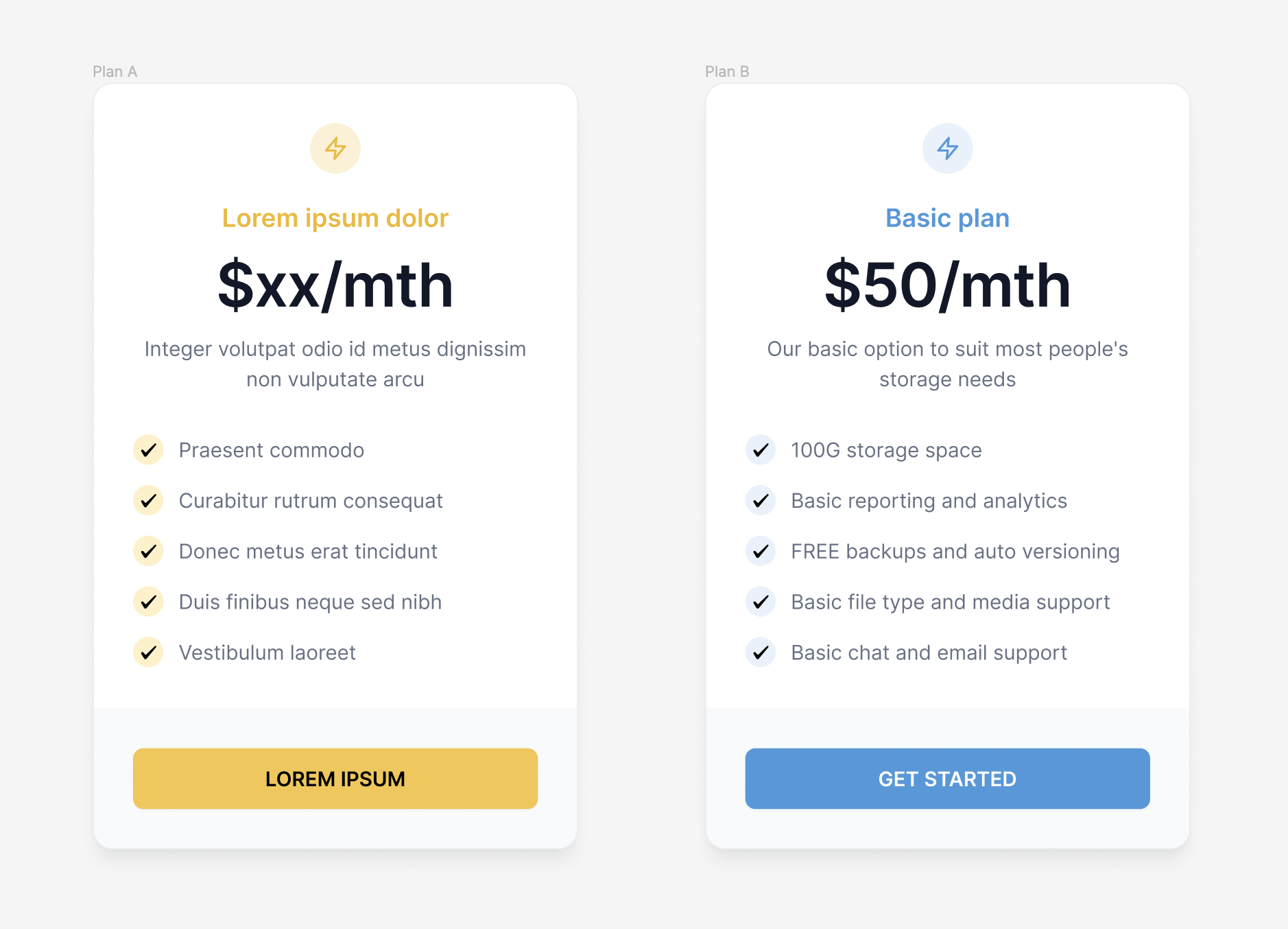In a previous article, The Importance of Cohesive Design in Development, my colleague Sam Marshall discussed rapid prototyping and the broader benefits prototyping can bring to the table for any Product Development Team. Building upon that notion, this article delves deeper into the world of prototyping, shedding further light on its broader benefits and offering fresh perspectives on leveraging and optimising this invaluable method.
Why Prototype?
There are endless possibilities that prototyping brings to product validation and development. Our previous post highlighted the core use case for building a prototype "... an invaluable approach for swiftly assessing concepts and ideas". Building upon this core use case of swiftly assessing concepts and ideas, let's highlight additional reasons why prototyping is a crucial component of any product validation process:
Gaining actionable insights efficiently.
Testing and validating critical business and product assumptions and hypotheses.
Augmenting other experimentation and research for a more holistic view.
Iterating and refining the prototype based on learnings.
Advancing the proposed solution in an informed manner.
Encouraging early and often collaboration and communication from the broader product development team and other areas of a business.
Providing a quick and easy means for a business to conduct desirability, feasibility and viability assessments.
Providing a channel to consistently de-risk key business and product decisions in turn, reducing the broader company risk profile.
Helping identify issues, deficiencies and defects in your proposed solution to minimise development rework saving time and budget.
Supporting a culture of continuous learning and innovation.
The prototype should be part of an intentional, responsive, continuous learning loop within the design, research and development workstreams.
Prototyping with Purpose
We believe prototyping aims to advance products for businesses, providing a simple and invaluable means to consistently inform, guide and generate meaningful and measurable impact for their product development teams and customers.
Prototyping lies at the heart of everything we do, from the initial ideation of a proposed solution through to the testing, validation and build process to carry this premise forward.
But before we embark on any prototype design and build, we always emphasise the importance of clearly defining "the why" behind it.
Suppose the purpose behind a prototype cannot be clearly articulated nor mapped back to the broader business need or product strategy. In that case, if there is no apparent business, product or strategic reason for investment of this time and energy, we believe it is necessary to pause, reflect, and, if need be, halt the build entirely. Clarity on the "why" is as vital as the prototype itself. Without a clear purpose, investing further time and effort becomes questionable.
Hence, all prototypes should be carefully constructed to test and learn about something specific. This requires well-crafted, testable assumptions and hypotheses to inform the build and provide a sense of purpose and direction.
Capturing Assumptions and Hypotheses:
To effectively capture assumptions and hypotheses, we follow a simple process:
Understand the statement or argument for analysis.
Break down the assumption into critical elements.
Question why each aspect is being asserted or assumed.
Consider alternative explanations or beliefs.
Clearly and concisely write down the identified assumptions.
For hypotheses, we frame them in this particular manner:
"We believe that [doing this] for [these people] will achieve [this outcome]. We'll know this is true/false when we see [this market feedback]."
By combining assumptions into hypotheses, we create a solid foundation for conducting prototype tests and validating our assumptions. Here's an example of two assumptions merged into one hypothesis that illustrates the above point:
Assumptions:
01 "We believe people will prefer the ability to save progress during initial customer signup"
02 "There will be more signups via the progressive signup solution"
Example hypothesis:
We believe that allowing the ability to save progress during initial signup
for all prospective customers will achieve a higher level of sign-up and completion
We'll know this is true / false when they mention this is their preference and we see an improvement of the current completion rate of 20%
So for this particular set of assumptions and hypotheses, we would conduct a simple A/B prototype test involving the current state onboarding experience vs the proposed progressive signup experience.

There's an art and science to prototyping. Once you become more familiar with the above framing and process, the better the briefing of the prototype build becomes, and the more actionable insight producing the effort becomes.
Prototyping Practices
Once the briefing process is complete, it is crucial to follow core fundamentals to maximise the effectiveness of prototype development. Here are ten guiding principles to keep in mind:
1. Keep it lean and targeted
Build only what you need right now. Only over-invest or add things if there's a compelling reason. Always expedite insights and learning first. The longer you build, ship and test, the longer it takes to learn, refine and sometimes pivot. Too long = can often be - too late.
2. Focus on maximising your learnings
Prioritise maximising learnings over mapping out every detail upfront. Producing actionable insights is more important than mapping out each component for this part of the broader design and learning process.
3. Choose the right tool or medium
Based on the desired insights and interactions, Choosing the right tool and medium for the job is essential. Consider what you're trying to learn and elicit from the tester/participant.
Example:
Say you wanted to test and validate some form of digital, conversational, chatbot experience. Which approach would be better to produce the results and insights you're seeking?
a) Replicate the proposed experience via a clickable high fidelity prototype built in Figma. It's likely the build will feel a bit clunky and somewhat restrictive.
b) Build a 'codified' working version within a conversational builder platform and serve in a live environment. This will likely feel more natural when interacting with and more representative of the end solution.

Let's say for argument's sake they both take exactly the same amount of time - which option (a or b) do you think would produce the most valuable and insightful feedback?
Be creative. Be selective. Be flexible. Again focus on maximising the learning vs overthinking the tool of choice. Either way, it needs to look and feel realistic to get real feedback.
4. Right fidelity for the right time
Determine the appropriate fidelity for each stage of the design and learning process. Start lean and focus on learning. Ramp up the level of detail in the proposed experience/solution when you're more confident and informed courtesy of the previous prototypes constructed and, preferably - other research activities you're doing.
5. Get feedback early and often
Seek early and frequent feedback from your team and potential users. Sharing the prototypes with your team and potential users will help identify issues and improvements, reducing UX debt. Do this often. Keep the build, test, and learn loop tight.
6. Base the build on data and insight
Leverage previous research, data and discussions. These insights are readily available to understand further what's applicable. Always ask, and never assume there isn't anything.
7. Prototype with real content
To elicit realistic feedback, avoid using placeholder text &/or dummy data. Use actual labelling, copy, content and data where possible.
Example:
Let's say you want to test a proposed price point for a plan type for a digital subscription service. Which copy and labelling option do you think will provide more useful feedback?

If you opt for Plan A, it's highly likely you will receive very little useful insight and feedback. You'll get feedback, but not the sort you're seeking.
If you opt for Plan B, because there’s a cost and currency, you'll validate if the basic plan is too cost prohibitive or acceptable. There's a simple description providing some level of context to the tester. You have product benefits and proof points to also help validate the broader value proposition and also tie back to the proposed price point.
8. Aligned to research
Ensure alignment with other research activities to support broader learning goals. Don't just rely on the insights coming from your prototyping activities. Conduct a blend of research; traditional research, experimentation and rapid prototyping to broaden the learning, validation and support the key learning goals. Ensure your prototype stream aligns with and compliments these separate streams.
9. Consistently prototype and QA
Establish a pipeline of prototyping and proof-of-concepting. Creating and nurturing a healthy pipeline of ongoing and consistent experimentation, research and prototyping particularly when engineering is in full swing will provide a broad range of downstream benefits. Any lower fidelity or ‘low-code’ prototypes still need to be triaged and interrogated within real environments and via the intended technologies. Always ensure there’s a feasibility and viability lens involved early and often within your prototyping QA process.
10. Get the right users for testing
Test prototypes with the intended end users to obtain valuable and meaningful insights. "We can't recruit enough people; let’s do in-house guerrilla testing to make up the numbers". You could get lucky and get something useful out of the conversation. Still, I wonder if it will be anywhere close to being as valuable as you would with a discernible target customer.
Most people I talk to embrace and appreciate the value prototyping can bring to the table and approach it appropriately. But like a prototype, there will always be ways to refine, iterate and further optimise. With a focus on maximising learning, choosing the right tools and medium and obtaining honest user feedback, following these ten simple guiding principles for effective prototyping practices, you can prototype with true purpose.
This article provides guidance for anyone seeking to unlock the true power of prototyping in their product development journey. As prototyping is a powerful tool with numerous possibilities, there's so much more to cover on this particular topic – watch this space for further insights.
Reach out on LinkedIn if you’d like to continue the conversation on prototyping and product design.




